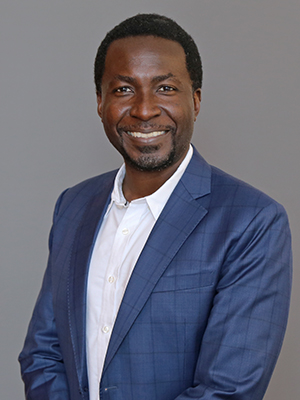Synergy in science
Professor Kimani Toussaint joins the Brown Engineering faculty, cultivating inspiration for new collaborations in engineering and beyond.
 There may be no one who spans the gap between engineering disciplines more seamlessly than Professor Kimani Toussaint. When Toussaint joined the Brown Engineering faculty in mid-August of 2019, he did so with appointments in electrical and computer engineering, biomedical engineering and mechanical engineering, with his research interests courting technologies involving optical physics and mechanics for applications in biology and nanomanufacturing.
There may be no one who spans the gap between engineering disciplines more seamlessly than Professor Kimani Toussaint. When Toussaint joined the Brown Engineering faculty in mid-August of 2019, he did so with appointments in electrical and computer engineering, biomedical engineering and mechanical engineering, with his research interests courting technologies involving optical physics and mechanics for applications in biology and nanomanufacturing.
“It’s nice to be at Brown, especially in an environment to nurture the bio-related work involved for potential translational applications,” the warm and inviting Toussaint said. “With the (Warren Alpert) medical school here, and bio researchers seemingly everywhere, I’m looking forward to this new environment giving a boost to collaborations. New problems will give new inspiration,” he said. “There will be new synergies to cultivate.”
Toussaint came to Providence after 12 years on faculty at the University of Illinois at Urbana-Champaign. With a National Science Foundation CAREER Award in 2010, the trajectory of his career took off. He would later be named the 2014-2015 Dr. Martin Luther King, Jr. Visiting Associate Professor at MIT, given the 2015 Illinois Dean’s Award for Excellence in Research, the 2017 Illinois Everitt Award for Teaching Excellence, and the 2019 Distinguished Promotion Award. Along the way, Toussaint was also named a Fellow of both the Optical Society of America and SPIE (the international society for optics and photonics), and senior member in the Institute of Electric and Electronic Engineers. In addition, he served as the PI and inaugural Director of the US NSF Nanomanufacturing (nanoMFG) Node at UI from 2017-2019.
With the (Warren Alpert) medical school here, and bio researchers seemingly everywhere, I’m looking forward to this new environment giving a boost to collaborations. New problems will give new inspiration.
Toussaint’s PROBE Lab (Photonics Research of Bio/Nano Environments), is an interdisciplinary research group focusing on both developing non-linear optical imaging techniques for quantitative assessment of biological tissues, and novel methods for harnessing plasmonic nanostructures for light-driven control of matter. “We went through a few iterations to get that name,” he said. “I wasn’t comfortable naming a lab after myself when I was getting started, and it took a week or so to come up with something that could bring all our work together – light, biophotonics, nanophotonics, and instrumentation. ”
The PROBE Lab currently has five students, including two who have come from Illinois. Toussaint is well versed in the bioimaging of tissues (the fibrous protein collagen shows up with a fairly strong optical signal), and in ways of building up an image in three dimensions. He is particularly interested in growing, assessing and quantifying the extracellular matrix, identifying the parameters more useful in a robust assessment of structures without using dyes, and collaborating on the correct measure of quantification.
Another focus of his work includes understanding how nanoscale antennas can be designed and implemented to enhance the properties of light in the near-field for unique applications. One such application has been the nanoscale version of optical tweezers, a Nobel-prize winning method, which he showed can also be used to effortlessly move nano- and microscale objects in solution.
Challenges in this work include thinking about ways to make nanostructures more scalable, without sacrificing their unique optical properties. His lab is currently acquiring new equipment, and customizing it in stages as needed. The PROBE Lab will continue to add on instruments as the lab develops and research expands.
Toussaint shares that while he wasn’t particularly looking to leave Illinois, he is excited to join the faculty at Brown and be closer to family on the East Coast. His wife, Diana Grisby-Toussaint, also accepted a position in the School of Public Health as an associate professor.
“I’ve enjoyed the ride,” Toussaint smiles when reflecting on exactly how he got to where is is today. “As an undergrad, I had a very broad interest in science. It wasn’t until I had a physics professor in thermodynamics who was passionate about optics that I really became interested.” This led him to the Boston University Center of Photonics, where he would earn his Ph.D. and exposed him to the world of quantum optics, and the potential engineering applications of quantum entanglement. He decided academia was a good path, and ended up at Illinois as a mechanical engineering professor.
“It is interesting how such a simple act of encouraging a student to ask questions could have such a profound impact on a student’s career path. Now that I am a professor, I try to keep in mind the responsibility that comes with my position. In front of a class, I can help to either inspire or discourage a student, and I always strive for the former,” Toussaint said.